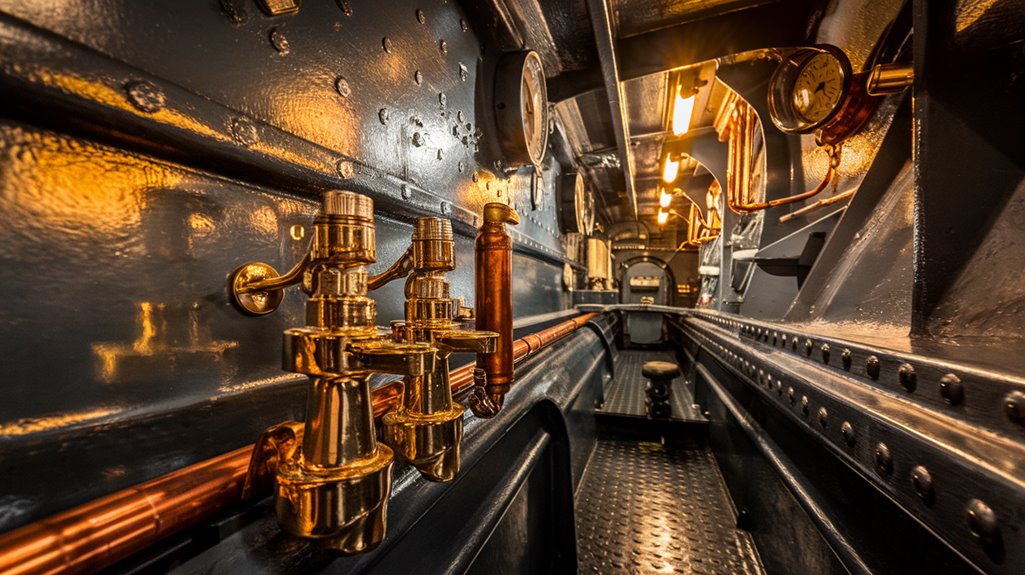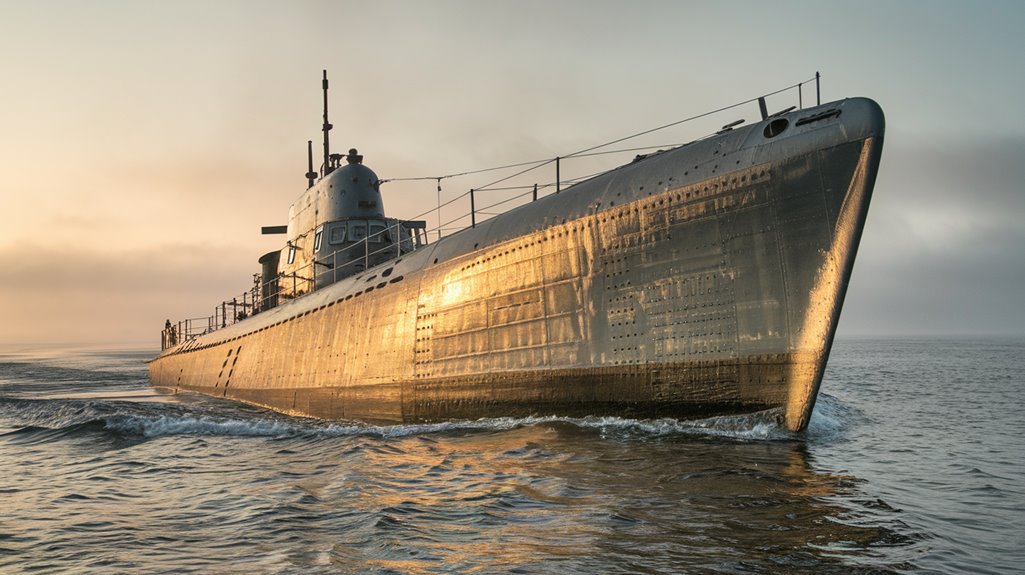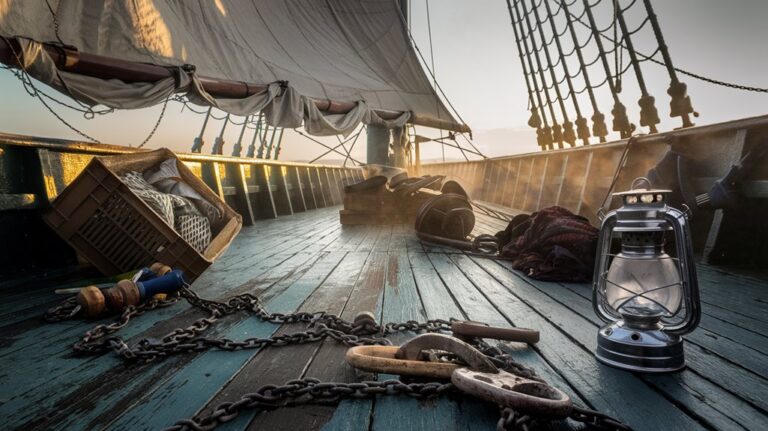The German Sub That Sank Itself by Flushing the Toilet
You've probably heard some peculiar stories about military mishaps, but this one might take the crown. In the final months of World War II, a German submarine met its demise not from depth charges or torpedoes, but from a toilet malfunction. The U-1206's advanced waste disposal system, meant to be a technological triumph, instead became its downfall. What makes this story even more fascinating isn't just the unusual cause, but the chain of events that turned a simple flush into a catastrophic disaster.
The U-1206: a Technical Marvel With a Fatal Flaw
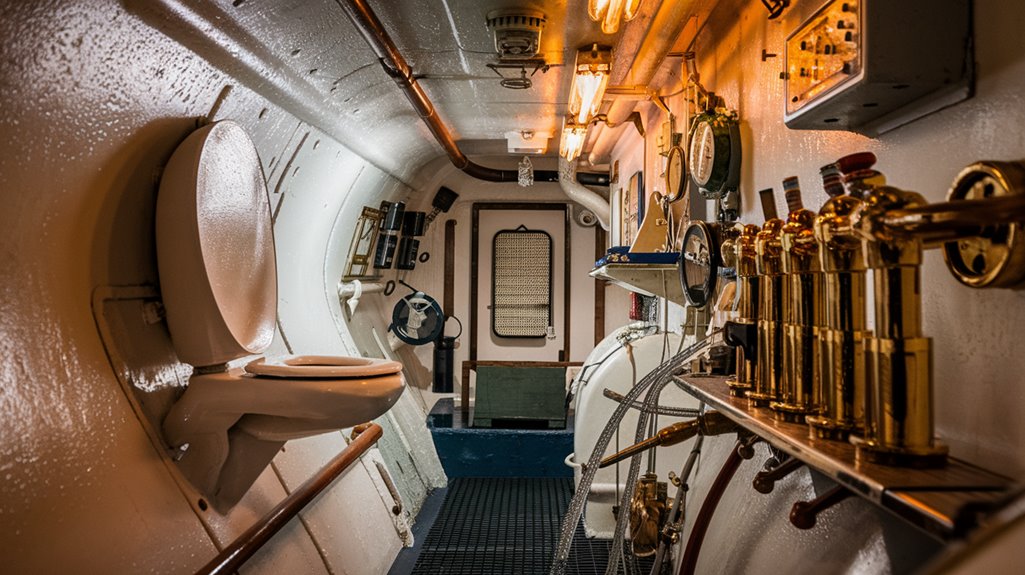
Although the Type VIIC U-boat represented Germany's most advanced submarine technology during World War II, the U-1206 proved that even the finest engineering couldn't overcome basic human error.
Built in 1943 by F Schichau GmbH in Danzig, this 67-meter naval engineering marvel showcased impressive specifications with its 769-ton displacement and ability to dive to depths of 200 feet. The submarine required a trained disposal expert to operate its sophisticated waste management system.
Under the command of Kptlt. Carl Adolf Schlitt, the U-1206 was commissioned on March 16, 1944, and set out on what would be its first and only patrol. Today, the submarine rests at 82 meters depth on a sandy seabed in the North Sea.
Despite its sophisticated design and capabilities, the submarine's advanced systems would ironically lead to its demise. The complex toilet system, a feature meant to demonstrate German technical superiority, became the vessel's Achilles' heel, ultimately causing its sinking in April 1945.
When Nature Calls: The Complex Toilet System
While modern submarines feature sophisticated plumbing systems, the U-1206's toilet design proved dangerously complex for its crew.
Unlike today's submarines that use straightforward ball valves and pressurized seawater for flushing, the German U-boat's toilet mechanics required precise timing and technical expertise to operate safely.
You'll find today's submarine waste management systems are built with multiple safeguards, including holding tanks and isolation valves that prevent backflow. Today's submarines are equipped with two separate toilets for different operating conditions.
Modern submariners can flush with confidence, knowing their toilets won't flood the vessel. The crew receives extensive valve operation training to ensure proper execution of waste disposal procedures.
But in the U-1206, operating the head meant following an intricate sequence of valve operations.
One wrong move in the process could spell disaster, as high-pressure seawater could rush back through the system.
This fatal design flaw would ultimately contribute to the submarine's demise.
Captain Schlitt's Costly Mistake
The complex toilet system of U-1206 proved fateful on April 14, 1945, when Captain Karl-Adolf Schlitt made a decision that would seal his submarine's fate.
On his first patrol as commander, Schlitt's attempt to operate the advanced submarine technology went horribly wrong. The captain's decision to handle the toilet system himself led to a catastrophic chain of events. The toilet design was so sophisticated that it required specially trained crew to operate it properly. The system required operating multiple valve sequences precisely to prevent disasters.
When seawater mixed with sewage flooded the submarine, it damaged the battery bank and released deadly chlorine gas.
Schlitt had no choice but to surface near the Scottish coast, exposing his vessel to British patrols. The captain's inexperience with the complicated machinery cost him dearly – four crew members drowned, and thirty-seven others, including himself, were captured as prisoners of war after scuttling the U-1206.
From Bad to Worse: The Cascade of Chaos
Inside U-1206's hull, a simple toilet malfunction spiraled into an unstoppable chain of catastrophes. When the engineer turned the wrong valve, seawater and sewage flooded the submarine, creating a deadly mixture with the vessel's batteries.
The advanced toilet technology, designed to handle waste disposal during deep submarine operations, had become their worst enemy. The submarine's high-pressure toilet system required extensive training to operate properly. While most U-boats could discharge waste directly into the sea, this Type VIIC submarine represented cutting-edge sanitation technology.
You'd think flooding would be bad enough, but it got worse. The toxic cocktail produced lethal chlorine gas that threatened to suffocate the crew.
With failed bilge pumps and poisonous fumes filling the compartments, Captain Schlitt had no choice but to order an emergency surface.
The crew desperately tried to save the sub by blowing ballast tanks and firing torpedoes, but the damage was done. Their high-tech convenience had sealed their fate.
Lessons From a Sunken Submarine
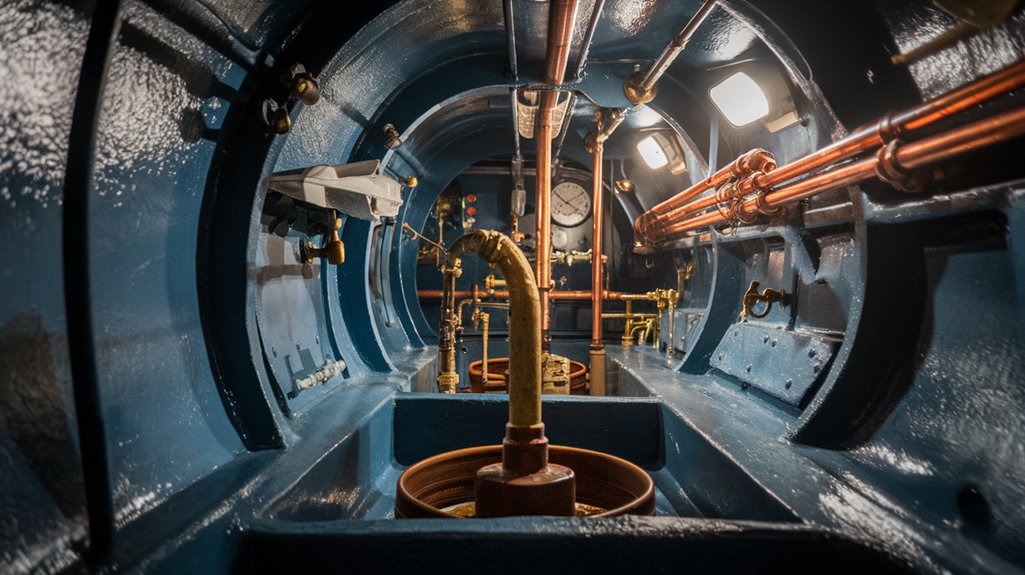
Beyond the immediate catastrophe of U-1206's flooding lies a wealth of hard-learned lessons that still resonate today.
The incident reveals how even seemingly minor components, like a toilet, can compromise submarine safety when paired with inadequate operational training.
You'll find that the disaster stemmed from multiple failures: an overly complex bathroom system, poor battery placement, and a captain's fateful decision to bypass proper procedures.
Operating in late April 1945, with Allied forces effectively hunting German submarines, the pressure to maintain stealth likely influenced hasty decision-making.
The sinking demonstrates why today's naval operations emphasize thorough training, clear emergency protocols, and simplified systems.
U.S. submarines demonstrated remarkable success with their simpler designs, having sunk 201 Japanese vessels during their Pacific campaign.
It's a stark reminder that innovation must balance with practicality – the Germans' sophisticated toilet design proved far less effective than the Allies' basic septic tanks.
Most importantly, you can see how leadership accountability and proper crew coordination remain essential for preventing similar disasters.

